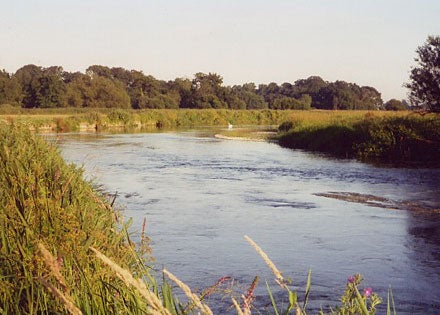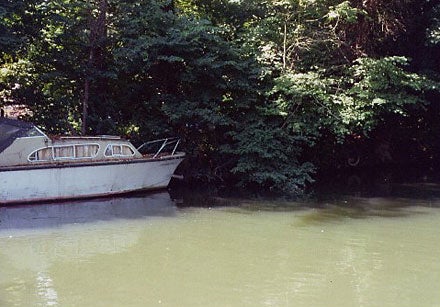| MARK WINTLE |
| Mark Wintle, an angler for thirty-five years, is on a quest to discover and bring to you the magic of fishing. Previously heavily involved with match fishing he now fishes for the sheer fun of it. With an open and enquiring mind, each week Mark will bring to you articles on fishing different rivers, different methods and what makes rivers, and occasionally stillwaters, tick. Add to this a mixed bag of articles on catching big fish, tackle design, angling politics and a few surprises. Are you stuck in a rut fishing the same swim every week? Do you dare to try something different and see a whole new world of angling open up? Yes? Then read Mark Wintle’s regular weekly column. |
| PLAYING FISH ON LIGHT TACKLE As a match angler, over many years I’ve had to learn how to consistently land decent sized fish on light tackle. I’ve often had to cope with unexpected chub or carp in match conditions and yet it has been vital to land them. So, what are the skills that make a difference? What tackle tips can help? How do you cope with different types of fish and different conditions? Before I go any further, I am going to define absolutely the limits that I’m going to be describing. I am only talking about using lines with a breaking strain of 4lbs or less. I am only talking about rods with a test curve of less than a pound, often half that. I am not talking about landing big carp, pike or catfish. The techniques and tackle are very different when it comes to those types of fishing. I do not propose to tell you about them here. Having got that off my chest, let’s also make it clear that the light tackle that I will be describing is unsuitable for catching seriously big fish, or fishing near snags for big fish. In very favourable conditions and with a lot of skill an angler can land double figure barbel or carp on light tackle BUT, it is irresponsible to fish for such fish deliberately. There are always situations where one may hook a fish that one never intended, and though having a slim chance, may actually land it. I, for one, have little truck with the idea that one must always use gear capable of landing the biggest fish in the river or lake. There are times when this is essential but there are many other times that such an approach prevents enjoyment of sport with many of the smaller species. Time to concentrate on the light tackle. Balanced tackle
A decent reel Lines, knots and hooks When it comes to hooks, I have spent years experimenting with hooks. Remember we are talking about small hooks now, not size fours and twos. It is amazing how good a hookhold you can get with a small hook. It is often a case of being selective with hooks. Some patterns may be brilliant in a size 18 but not a 20 or vice versa. When people talk about straightening hooks, I wonder what is going on. I very rarely get a hook straightened. To me it suggests that the hook is being used with heavier tackle than it is designed for, either that or the hook is no good in the first place. If you straighten a hook on a snag, replace it.
Far bank chub Fast water
On the Hampshire Avon and Dorset Stour in summer, the luxuriant weed growth means that trying to bring a fish upstream against the flow simply gives a chub or barbel ample opportunity to get into the weed and, as you’re pulling the fish into the weed, a better technique is needed. It’s simple. Get off your seat and get downstream of the fish. Don’t wait until the fish is weeded. Now the fish is fighting you and the current, and again you might well be able to use the current to help you net it. The final technique is where there is much slower water by the near bank. By pulling the fish towards the bank into the slacker water, the fish loses the power of the current, and it ought to be easier to bring the fish in. Advanced Stuff Firstly, he understood and practiced the use of side-strain to pull a fish off course by turning its head. He recognised that the fish that is often most difficult to control is the one moving most directly away from the angler, and therefore the most likely to reach a snag. To counteract this, he would try to stop the fish gaining momentum, using a combination of side-strain to throw the fish off balance and knowing how much his tackle could withstand. This is where the anticipation comes in, in that he dealt with each move by the fish in such a way that the fish found it easier to give up rather than keep fighting, ie, it ended up confused! Furthermore, the fight took far less time and the fish could be returned in much better condition than one exhausted by inept and excessive playing. A final tip from the great master was to keep low and avoid scaring the fish when playing it, and this applied to netting it as well. The net was sunk to quietly await the fish that hardly realised the trap was there. Finally, he was critical of those that did not bring the fight to a swift conclusion through failure to understand what they were doing. This included both allowing the fish to do more or less what it wanted until it finally succumbed through exhaustion, and those that treated playing a fish as simply a brutal tug of war that led to frequent tackle losses and disturbed swims. There are other techniques that I have not covered, for some species demand special considerations but I hope that I have given you a flavour of the skills that can be developed to make landing fish a straightforward task. |
















